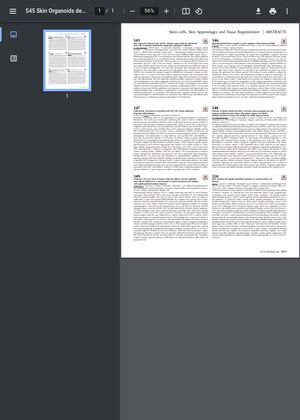Skin Organoids Derived From NCSTN Mutated Patient-Induced Pluripotent Stem Cells Recapitulate Hidradenitis Suppurativa Pathogenic Hallmarks
November 2022
in “
The journal of investigative dermatology/Journal of investigative dermatology
”
Hidradenitis Suppurativa hair follicle epithelial stem cells keratin plug induced pluripotent stem cells NCSTN gene CRISPR-Cas9 RNA-seq keratinocyte proliferation keratinocyte differentiation cytokine genes chemokine genes IL1a IL18 CCL20 S100A7 neutrophils Th17 cells 3D-imaging hair follicles inflammatory proteins HS iPSCs CRISPR RNA sequencing interleukin-1 alpha interleukin-18 chemokine ligand 20 psoriasin

TLDR Skin organoids with NCSTN mutation show changes in hair follicle development and higher inflammation, key features of Hidradenitis Suppurativa.
Hidradenitis Suppurativa (HS) is an inflammatory skin disease initiated by hair follicle epithelial stem cells that proliferate uncontrollably, leading to a keratin plug in the follicle and interconnected tendrils in the dermis. This study developed skin organoids from induced pluripotent stem cells (iPSCs) obtained from an HS patient with a mutation in the NCSTN gene. The mutation was corrected using CRISPR-Cas9 to create a control line. RNA-seq analysis revealed an enrichment of deregulated genes involved in keratinocyte proliferation and differentiation in the mutated organoids. These organoids also showed higher expression of cytokine and chemokine genes, including IL1a, IL18, CCL20, and S100A7, which activate neutrophils and Th17 cells in HS skin. 3D-imaging of hair follicles organoids showed a less organized structure, indicating a differentiation defect. The study concluded that the NCSTN mutation in iPSCs-derived skin organoids results in altered hair follicle stem cell differentiation and increased expression of inflammatory proteins, which are hallmarks of HS.
